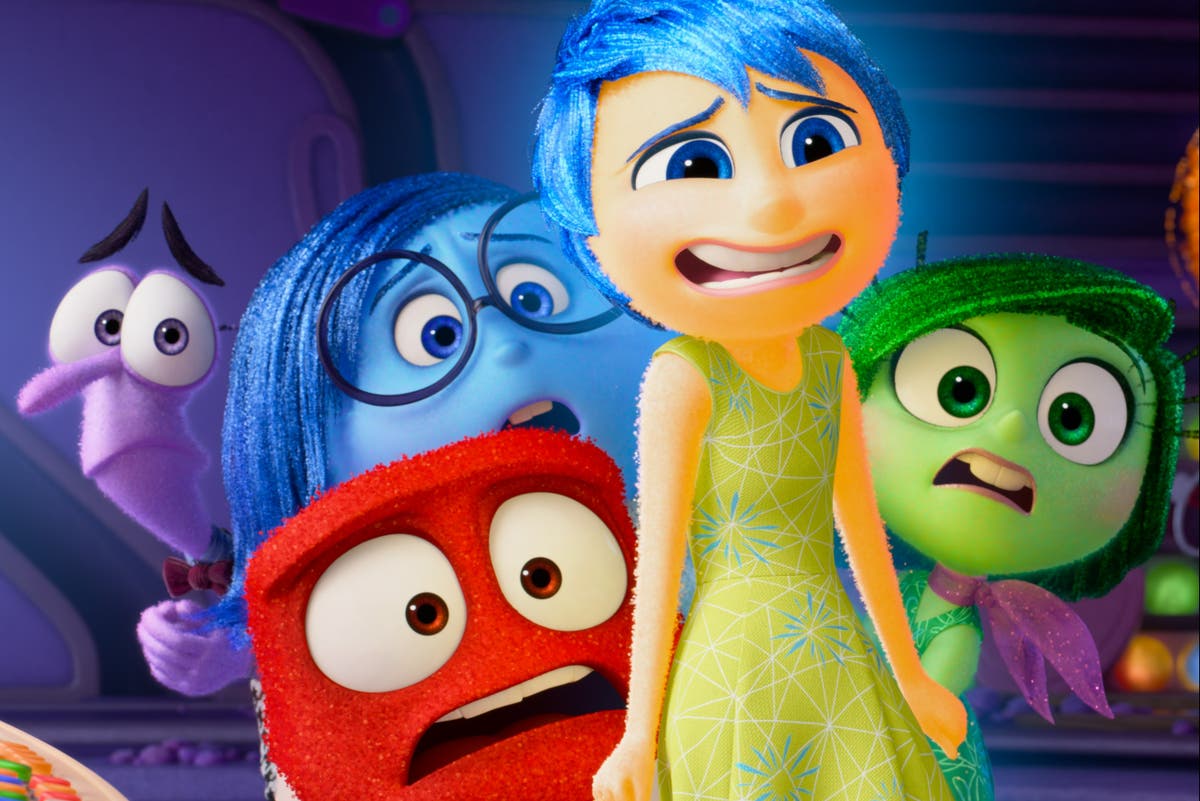It may have been called Inside Out 2, but there’s nothing “out” about it. The animated sequel, set among the anthropomorphised emotions inside a teenage girl’s head, has been an unmitigated hit for Pixar, Disney’s most decorated animation wing. Shrugging off any notion of post-pandemic slowdown, the film, still in cinemas, has risen to become the eighth highest-grossing movie of all time. Kids loved it. Parents and critics wept before it. This week, however, it’s been at the centre of a PR furore, after a report by IGN claimed that Pixar executives had sought to quash LGBT+ plotlines during the making of the film. The instruction, claims the report, was to make the film “less gay”.
It’s not like this demand came from nowhere. Ever since the film’s release, viewers have speculated over the sexuality of Inside Out 2’s 13-year-old protagonist Riley – the girl in whose emotionally turbulent mind we spend most of the film. The film certainly leaves room for interpretation: much of the plot concerns Riley’s obvious (though not overtly romantic) infatuation with an older girl, named Val. At one point, Riley’s emotions – Joy (Amy Poehler), Disgust (Liza Lapira), Fear (Tony Hale), Anger (Lewis Black) and Sadness (Phyllis Smith) – encounter a monstrous figure deep in Riley’s subconscious, referred to only as her “dark secret”. It is revealed in a post-credits sequence that this secret referred to her burning a hole in a rug, but that didn’t stop many queer viewers from putting two and two together and understandably getting a big gay four. Sources in the IGN report claim that the film was edited to downplay any suggestion of “romantic chemistry” between Riley and Val, altering the lighting and tone in an effort to de-sapphicate matters. It was, claimed one person, “a lot of extra work to make sure that no one would potentially see them as not straight”.
If these claims are to be believed (The Independent has contacted Pixar for comment), it’s a dispiriting reminder of just how flimsy Disney’s pretence of progressiveness really is. It’s alleged in the report that Disney executives cited the failure of 2022’s Lightyear, which featured a fleeting kiss between two lesbian characters, as a reason to avoid any such shenanigans in Inside Out 2. It’s probably true that Lightyear lost a bit of money thanks to this inclusion – the film was banned in 14 Asian and Middle Eastern countries because of it – but the idea that the blink-and-you’ll-miss-it lesbian representation was the reason this wildly unnecessary and conceptually nebulous spin-off tanked is a gross, fallacious suggestion.
The House of Mouse is far from the only major studio to come up short when it comes to queer representation on screen, but it is the largest and most egregious offender. The studio’s supposed “wins” for diversity are always ballyhooed. Marvel’s Loki offhandedly mentions that he’s bisexual! Jungle Cruise stars Jack Whitehall as a (wink, wink) confirmed bachelor! Deadpool sure loves to flirt with Wolverine! (…Before going home to his real love interest, his wife.) Meanwhile, the omissions and shortcomings are ignored utterly. In 2017’s Beauty and the Beast, Josh Gad’s villain LeFou was at the centre of Disney’s first “exclusively gay moment” – a two-second, thoroughly unromantic male-male dance; Gad later admitted the role didn’t “do justice to what a real gay character in a Disney film should be”. Seven years on, things have barely improved. Disney, at this point, is Lucy in the old Peanuts comics, inviting gullible old Charlie Brown to take yet another punt at the American football. That is to say, if you went into Inside Out 2 hoping that Disney would use its platform to explore the inner life of a queer teenager, then boy, do I have a rickety bridge to sell you.
There is an argument to be made that authentic queer representation – not just films that include queer characters, but films that are made with an authentically queer voice, with a sensibility that refuses to cater to heteronormative audiences – is impossible within the framework of large-scale studio filmmaking. Queerness is inherently countercultural. It disrupts and subverts hegemonic social structures – the sort of structures around which huge capitalist conglomerates such as Disney are built. Getting a gay character into a Pixar film isn’t some act of cathartic social justice, but rather a matter of assimilation.
But then, of course, there is the other way of looking at it. Millions of children will grow up to be queer adults, and showing them queer characters on screen is a way of helping them believe that their own sexuality is normal and not a source of shame. Even if this representation is flat and insincere, is it not better than no representation at all? Could it not change minds – and, by extension, even save lives? Just because it’s imperfect doesn’t mean that there’s no value in doing it, nor does it stop you from pushing for better forms of representation elsewhere.
It may be that the backlash surrounding Inside Out 2 will have made an impact on Disney. Perhaps, when Inside Out 3 makes its inevitable way to screens, Joy, Sadness et al will find themselves introduced to a new emotion called Latent Homosexual Desire, a variegated blob voiced by, let’s say, Chappell Roan. But somehow I don’t see it happening. The message seems to be clear: if you’re young, queer, and want to see yourself on screen, don’t look over here. Say it enough times, and it’ll start to be heeded.
‘Inside Out 2’ is in cinemas now

